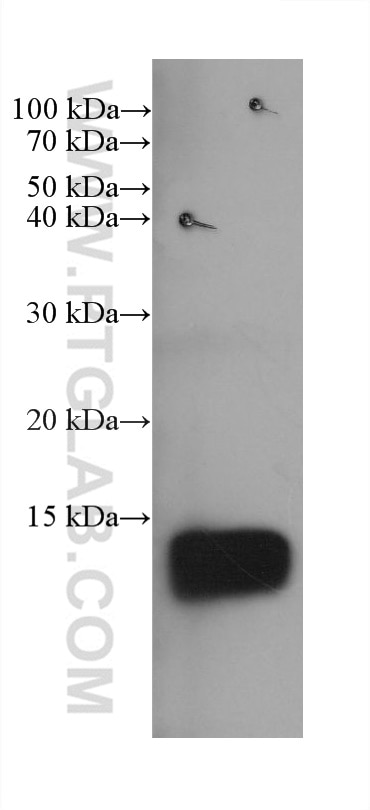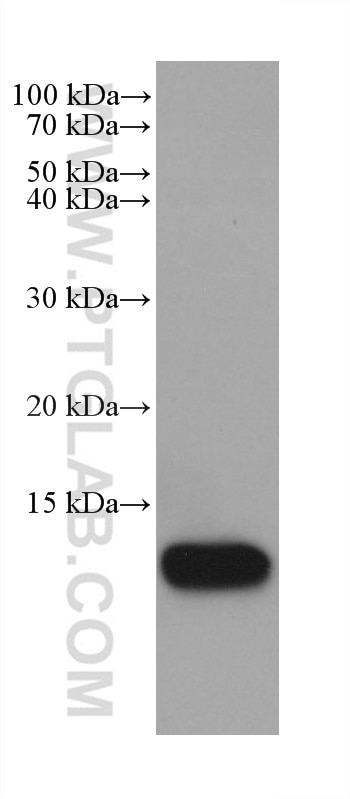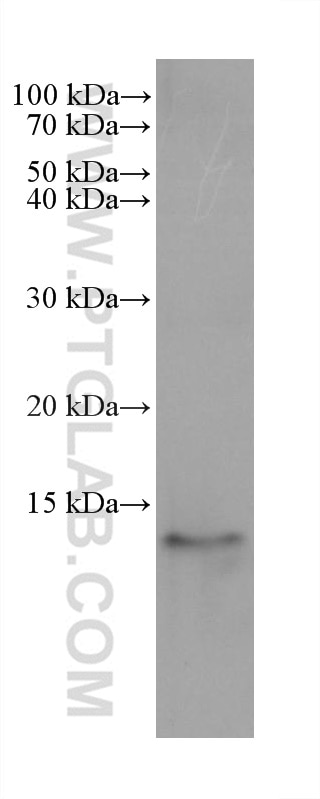Validation Data Gallery
Tested Applications
| Positive WB detected in | human saliva, HT-1376 cells, MDA-MB-468 cells, SK-BR-3 cells |
| Positive IF/ICC detected in | U2OS cells |
Recommended dilution
| Application | Dilution |
|---|---|
| Western Blot (WB) | WB : 1:5000-1:50000 |
| Immunofluorescence (IF)/ICC | IF/ICC : 1:200-1:800 |
| It is recommended that this reagent should be titrated in each testing system to obtain optimal results. | |
| Sample-dependent, Check data in validation data gallery. | |
Product Information
68900-1-Ig targets S100A9 in WB, IF/ICC, ELISA applications and shows reactivity with human samples.
| Tested Reactivity | human |
| Host / Isotype | Mouse / IgG1 |
| Class | Monoclonal |
| Type | Antibody |
| Immunogen | S100A9 fusion protein Ag27025 相同性解析による交差性が予測される生物種 |
| Full Name | S100 calcium binding protein A9 |
| Calculated molecular weight | 13 kDa |
| Observed molecular weight | 14 kDa |
| GenBank accession number | BC047681 |
| Gene Symbol | S100A9 |
| Gene ID (NCBI) | 6280 |
| RRID | AB_3670450 |
| Conjugate | Unconjugated |
| Form | Liquid |
| Purification Method | Protein G purification |
| UNIPROT ID | P06702 |
| Storage Buffer | PBS with 0.02% sodium azide and 50% glycerol{{ptg:BufferTemp}}7.3 |
| Storage Conditions | Store at -20°C. Stable for one year after shipment. Aliquoting is unnecessary for -20oC storage. |
Background Information
S100A9 is a calcium binding protein as a member of the S100 family of proteins. S100 proteins are low molecular weight (9 to 14 kDa) intracellular calcium-binding proteins that control key cellular pathways including regulation of the cytoskeleton, cell migration and adhesion, and host oxidative defense. S100A9 may exist as a homodimer, heterodimer (24 kDa) with an S100A8 partner (S100A8/A9), or as a heterotetramer (28 kDa) with an S100A8 partner(S100A8/A9). S100A8 and S100A9 are found intracellularly in granulocytes, monocytes, and early differentiation stages of macrophages.
Protocols
| Product Specific Protocols | |
|---|---|
| WB protocol for S100A9 antibody 68900-1-Ig | Download protocol |
| IF protocol for S100A9 antibody 68900-1-Ig | Download protocol |
| Standard Protocols | |
|---|---|
| Click here to view our Standard Protocols |




